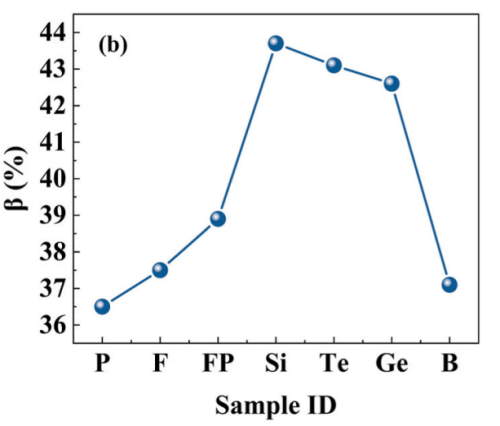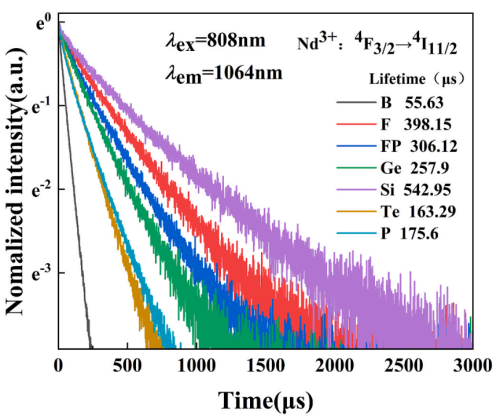Recently, researchers from the High Power Laser Unit Technology Laboratory of Shanghai Institute of Optics and Fine Mechanics (SIOM) of the Chinese Academy of Sciences (CAS) proposed a new scheme based on rare earth ion Nd3+ doped silicate as a pure blue laser material, and the relevant research results were published online in Journal of Luminescence on May 27, 2022.
The visible light emitting of rare earth ion Nd3+ doped materials has important application potential in the fields of display technology, seabed exploration and laser medical treatment. At present, the main ways to obtain pure blue lasers are: 1) blue laser diodes, 2) near-infrared laser diode frequency doubling and 3) solid-state laser quasi-triple-level frequency multiplication. These methods all face a series of problems such as low beam quality, high input power requirements, high cost or complex equipment. Finding new glass matrix materials is the direction and focus of researchers' research.
The research team proposed a new scheme for Nd3+ ion-doped silicate glass to achieve pure blue light luminescence, reinforcement and mechanical properties, and a mature laser matrix material for the preparation process. Firstly, the glass of different matrices such as borate, fluoride, fluorophosphate, germanate, tellurium, phosphate and silicate was studied, and the different optical parameters were compared and calculated and different optical properties were analyzed, and the Nd3+ doped silicate glass had better performance. In silicate glass, the optical J-O parameters Ω2 and Ω4/Ω6 of Nd3+ ions can reach 5.14 × 10–20 cm2 and 1.08, respectively. The 4F3/2 → 4I9/2 energy levels produce a fluorescence branch ratio of 43% for 900 nm blue light (Figure 1) and a fluorescence lifetime of 542.95 μs (Figure 2).
This research may lead to a host material for fiber laser operated at pure blue wavelength.

Figure 1. Fluorescence branch ratio of luminous intensity of 4F3/2 → 4I9/2 energy levels in different matrices. (Image by SIOM)

Figure 2. Fluorescence lifetime of 4F3/2 → 4I11/2 energy levels in different matrices. (Image by SIOM)
Article website:
https://doi.org/10.1016/j.jlumin.2022.119005
Contact:
WU Xiufeng
General Administrative Office
Shanghai Institute of Optics and Fine Mechanics, CAS
Email: xfwu@siom.ac.cn
Web: http://english.siom.cas.cn/